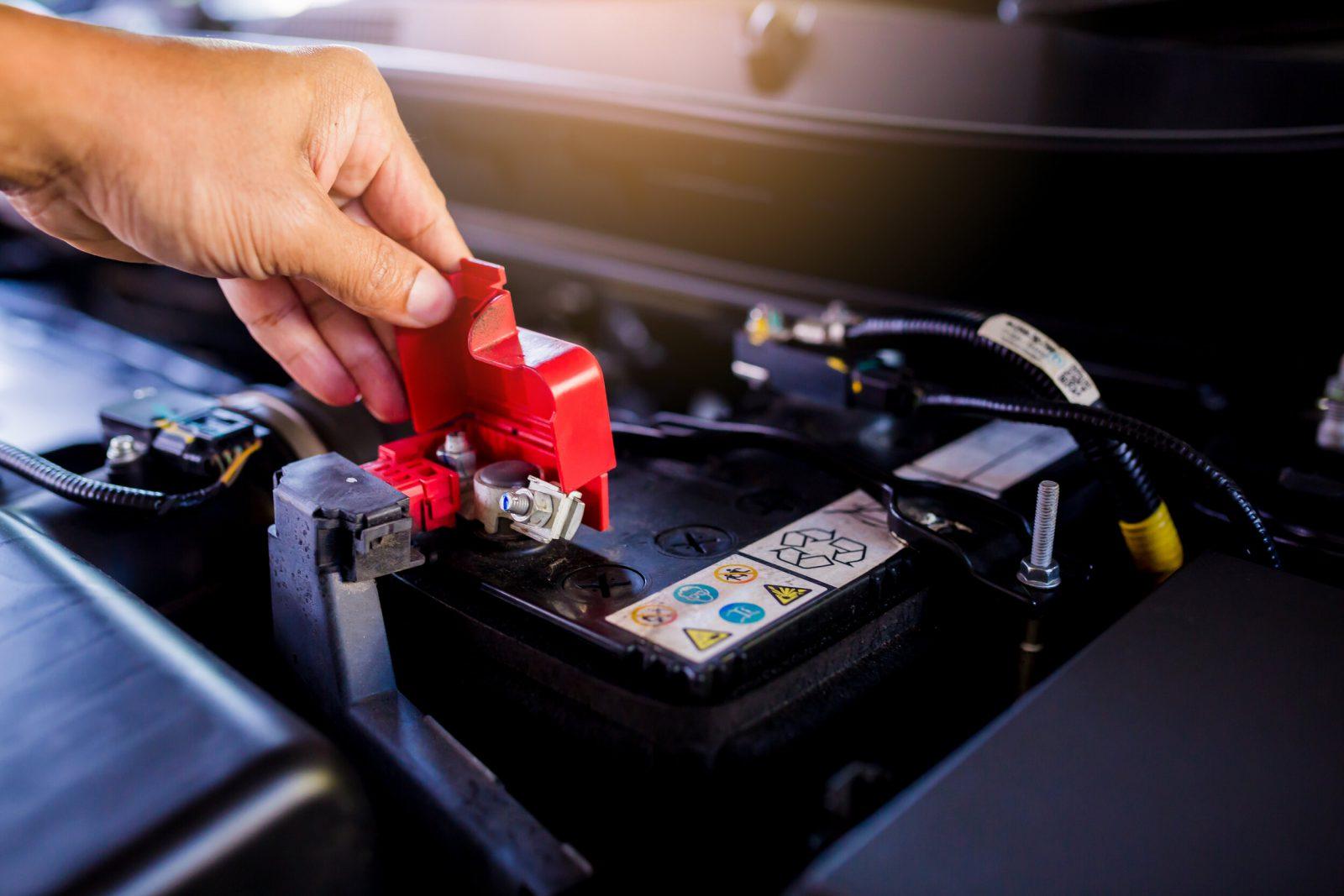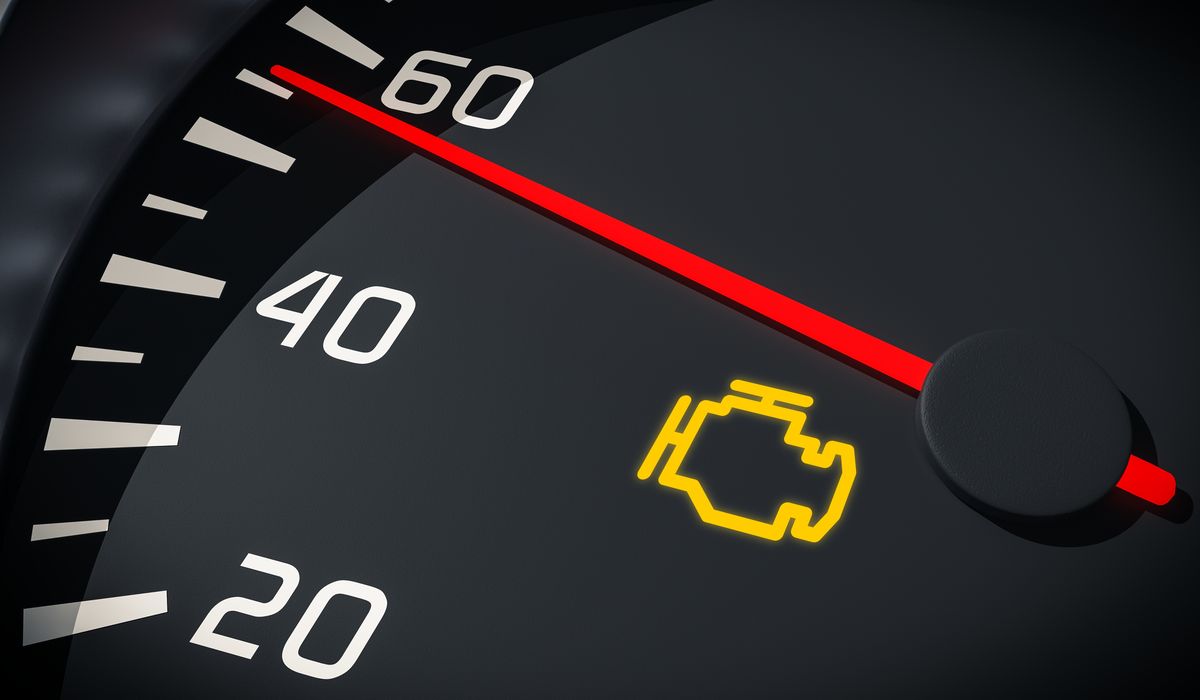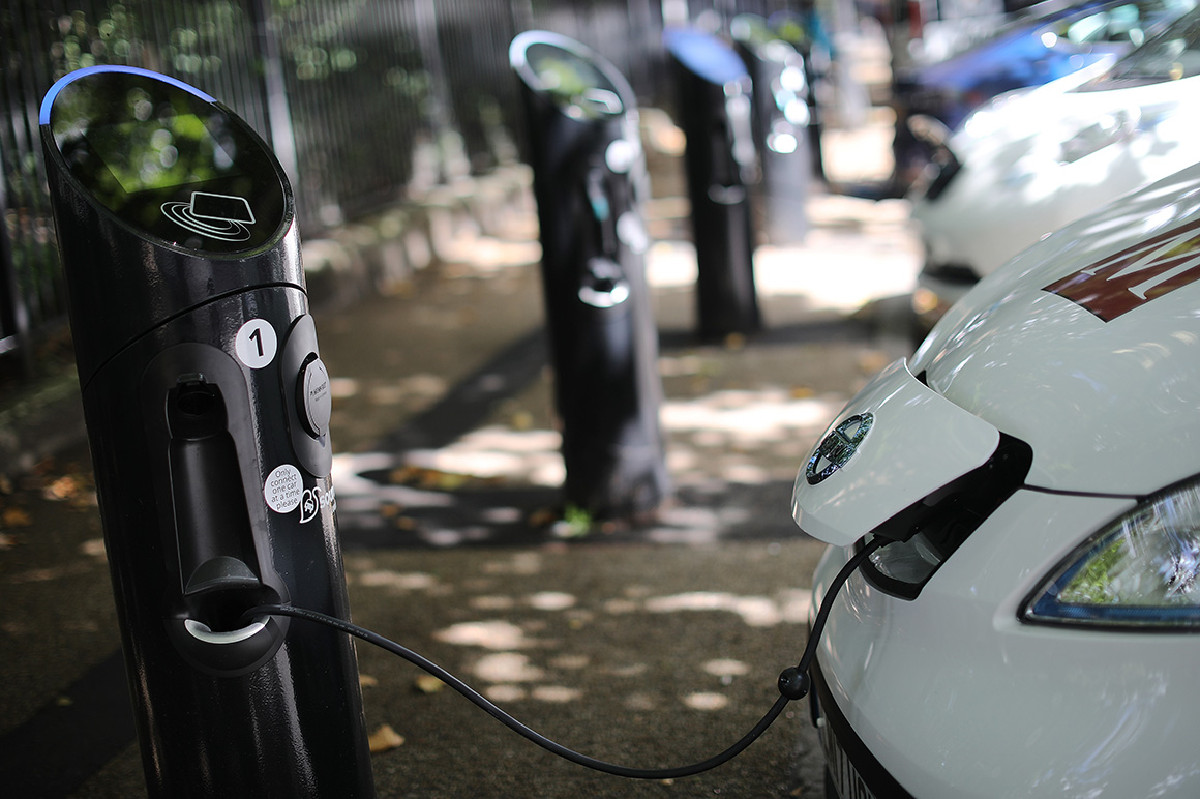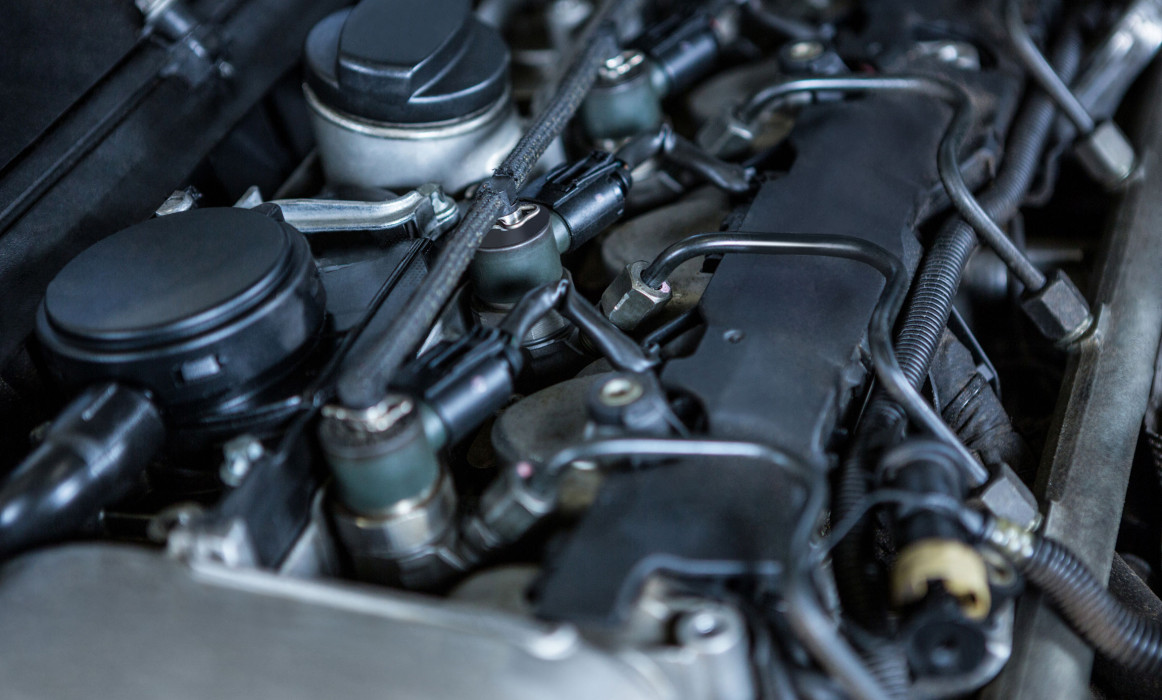Tips for Driving in the Dark



Car batteries are an essential part of an automobile. From getting your car started to charging your phone on-the-go, batteries provide the zap your vehicle needs to keep rolling. That’s why it’s so important to know when to start considering a car battery change, as well as what you can do to extend its lifespan.
On average, car batteries last between 3 and 5 years. One of the most important factors that affects how long a car battery will last is the weather. A running engine under the hood is already producing high levels of heat. Throw in a scorching hot day and you have a severe drain on your car battery, which can lead to an increased chance of a dead battery if you don’t take proper summer driving precautions.
Warm weather can cause fluid in car batteries to evaporate, damaging the internal structure of the battery. That’s why average battery life is shorter in warmer climates. So when estimating how long your car battery life will last, consider the climate you will do most of your driving in.
Regardless of the temperature you drive in, properly taking care of your car battery can help keep it running. Check out the seven tips below on extending the life of your car battery:
1. Limit Short Rides
Quick car rides prevent your car’s battery from fully charging. Maintain your car’s battery power by driving it frequently and for extended periods. If you don’t use your car often, consider investing in a portable car battery charger. These portable chargers can jump start your battery without another vehicle in case you’re ever stranded.
2. Keep Your Battery Tightly Fastened
A battery that’s not securely fastened could vibrate, potentially resulting in internal damage and short circuits. Have your battery terminal checked regularly – especially if you frequently drive on bumpy roads – to ensure it is tightly and properly positioned in the mounting bracket.
3. Turn Off All the Lights When You Exit
Accidentally keeping your headlights and car door lights on can put a heavy toll on your vehicle’s battery. To keep yourself from forgetting, post a note on your dashboard, attach a sticker reminder on your car remote or park in a direction where you must walk past your headlights to get to your destination.
4. Control the Corrosion
Battery terminals corrode over time but keeping them clean from buildup is a great way to extend the life of your car battery. Scrub the terminals with a toothbrush dipped in a baking soda and water mixture. Then, using a spray bottle with cold water, rinse the mixture off and follow up with a thorough drying with a clean cloth.
5. Test Your Battery Often
Knowing the condition of your car battery matters when you want to maximize its life. Test your battery’s output voltage level with a car battery tester to keep track of how well you’re maintaining it and if you’re due for a new one.
6. Don’t Use Electronics While Idling
Turn off functions like the radio or air conditioner when your engine isn’t running to put less wear and tear on your battery power. Extended periods of idling also can wear a battery down.
7. Care for Your Whole Car
Your car is comprised of many parts working together. Making sure you are taking your car in for routine tune ups, as well as properly storing your vehicle are also simple ways to ensure your battery’s lifespan can reach its full capacity. The battery is just one component of a well-running car, so make sure to properly maintain all parts of your car to extend its life and the life of your battery.

When your car’s internal computer identifies a problem with the engine or transmission, it turns on the check engine light. The reasons for a check engine light turning on can range from something minor like a loose gas cap to something more serious like a faulty catalytic converter. It could even be a sign of internal engine failure. Ignoring the problem can turn a potentially quick fix into a costly and time-consuming repair.
Why is your check engine light on?
Common minor and major reasons for a check engine light to turn on include:
Loose gas cap
An internal problem in the engine
An issue with or even theft of the catalytic converter
Faulty spark plug, spark plug wires, or ignition coils
Malfunctioning oxygen sensor
Damaged mass airflow sensor
A bad tank of gas
What to do when your check engine light comes on
Once you notice your check engine light has come on, pay attention to how the car is driving. Does something feel off? If so, reroute yourself to the nearest mechanic to get the car checked out. If the car seems to be running fine, you can check a few things on your own before heading to the mechanic.
There are a couple of simple solutions if your check engine light came on after getting gas. A loose gas cap is one of the most common reasons for the check engine light to go on. Check that your gas cap is screwed on securely and that it’s in good condition.
If you have a tank of bad gas in the car, your check engine light may come on. For example, if your vehicle is designed to run on premium gas (octane grade 91 to 94), the engine may struggle to run on regular gas (octane level 87). You can safely solve this problem by having a professional drain your gas tank. If you must drive until the tank is empty again, this may not cause severe damage, as long your car doesn’t show signs of overheating or poor engine performance.
Do you suspect something else caused your check engine light to turn on? The most foolproof method to check the engine light is to read the diagnostic code in the car’s internal computer. If you have experience working with cars, you can do this at home with an OBD-II scanner. Otherwise, head to your local service station where a mechanic can read the diagnostic code and determine the correct fix.
Why you shouldn’t ignore your check engine light.
The check engine light is sometimes confused with the maintenance required light, although the two are unrelated. The maintenance required light goes on when your car is due for routine service. Examples of routine services include an oil change. However, the check engine light is an indication that something unexpected has occurred.
Some later car models have check engine lights in different colors and modes to help you determine how severe the issue is. If your car has this feature and your check engine light flashes on and off intermittently or glows red, it’s a sign you should get your car to a mechanic as soon as possible. Depending on your car’s make and model, a solid yellow or orange light may indicate lower severity. However, it’s still a sign that you should make an appointment to diagnose and fix the problem.
What are the implications of ignoring your check engine light?
Ignoring the light and putting off a visit to the mechanic could result in more costly and time-consuming issues you’ll have to deal with in the future. The problem that caused your check engine light to turn on in the first place may get worse or impact other aspects of your car’s engine or transmission. Ignoring the problem could lead to more long-term damage that your car insurance may not cover.
You also won’t be able to pass your next car inspection until the check engine light is off and you have resolved the problem. Your best option is to get the issue resolved quickly. If you’re concerned about affording unexpected engine repairs on your car, consider mechanical breakdown insurance.

Who knew license plate laws could be so complicated? Ever since you put your license plates on your vehicle, you probably haven’t thought much about them.
Well, somebody with a state job at the MVC certainly has given them some thought.
New Jersey has a host of rules that you must follow pertaining to your license plate, mostly put in place to ensure that police, cameras, and plate readers can easily read your license plate, according to the New Jersey Motor Vehicle Commission.
I’m betting there are even a few license plate rules you weren’t aware of.
Here are seven reasons you can be ticketed for your license plates in New Jersey:
You Must Have Two License Plates
In New Jersey, all motor vehicles are required to have a license plate on the front and the back of the vehicle. This goes for all types of motor vehicles, except for motorcycles, which are only required to have a license plate on the back.
Your Plates Must Be Secured
This may come as a surprise, but you can’t simply put your plates in the front and back windows of your car. If you do so without firmly fastening the plates so that they can’t slip or slide around, you may be ticketed.
What’s more, even if you manage to properly secure your license plates in the windows of your car, you may still be ticketed. This is because, in New Jersey, it is against the law to drive with anything blocking any area of your front or back window.
Distance From the Ground
In New Jersey, your license plates must be affixed to your vehicle, such that it is no more than 48 inches above the ground and no less than 12 inches from the ground. This one was news to me. Do police actually get out and measure? They just might.
Inadequate Illumination
Your plates must be adequately illuminated at night. This is why vehicles are constructed with small lights around the area where your license plates should be attached. Make sure that these lights are in working order, or you may be ticketed.
Snow And Ice
You must also be sure to remove any snow and ice from your license plates that might prevent them from being read. If any letters or numbers on the plate are unable to be read, you may be ticketed. You will see many people breaking this rule every time it snows.
No glass or Plastic Covers
New Jersey forbids the use of any plastic or glass license plate covers, or any other covering or coating that may distort or obscure your license plate, such that it cannot be properly read or photographed. I am not breaking this rule, but that’s completely by chance. I had no idea about this one.
Parked Or Driving
You can be ticketed for a license plate violation, whether your vehicle is parked or being driven. If the violation was noticed while you were parked on a public road or highway (as opposed to being parked in your own driveway or garage), the violation will result in a parking ticket.
If the violation was noticed by law enforcement while you were operating the vehicle, it will result in a moving violation.

Who knew license plate laws could be so complicated? Ever since you put your license plates on your vehicle, you probably haven’t thought much about them.
Well, somebody with a state job at the MVC certainly has given them some thought.
New Jersey has a host of rules that you must follow pertaining to your license plate, mostly put in place to ensure that police, cameras, and plate readers can easily read your license plate, according to the New Jersey Motor Vehicle Commission.
I’m betting there are even a few license plate rules you weren’t aware of.
Here are seven reasons you can be ticketed for your license plates in New Jersey:
You Must Have Two License Plates
In New Jersey, all motor vehicles are required to have a license plate on the front and the back of the vehicle. This goes for all types of motor vehicles, except for motorcycles, which are only required to have a license plate on the back.
Your Plates Must Be Secured
This may come as a surprise, but you can’t simply put your plates in the front and back windows of your car. If you do so without firmly fastening the plates so that they can’t slip or slide around, you may be ticketed.
What’s more, even if you manage to properly secure your license plates in the windows of your car, you may still be ticketed. This is because, in New Jersey, it is against the law to drive with anything blocking any area of your front or back window.
Distance From the Ground
In New Jersey, your license plates must be affixed to your vehicle, such that it is no more than 48 inches above the ground and no less than 12 inches from the ground. This one was news to me. Do police actually get out and measure? They just might.
Inadequate Illumination
Your plates must be adequately illuminated at night. This is why vehicles are constructed with small lights around the area where your license plates should be attached. Make sure that these lights are in working order, or you may be ticketed.
Snow And Ice
You must also be sure to remove any snow and ice from your license plates that might prevent them from being read. If any letters or numbers on the plate are unable to be read, you may be ticketed. You will see many people breaking this rule every time it snows.
No glass or Plastic Covers
New Jersey forbids the use of any plastic or glass license plate covers, or any other covering or coating that may distort or obscure your license plate, such that it cannot be properly read or photographed. I am not breaking this rule, but that’s completely by chance. I had no idea about this one.
Parked Or Driving
You can be ticketed for a license plate violation, whether your vehicle is parked or being driven. If the violation was noticed while you were parked on a public road or highway (as opposed to being parked in your own driveway or garage), the violation will result in a parking ticket.
If the violation was noticed by law enforcement while you were operating the vehicle, it will result in a moving violation.

Driving in rain, whether a sprinkle or a heavy downpour, can be one of the most difficult driving situations a driver encounters. Rainy conditions are directly associated with higher accident rates. No matter what part of the country you live in, it is almost certain that you will be required to drive your vehicle in the rain at some point. Knowing how wet roads and reduced visibility affects the way your vehicle handles will help you drive safely in rainy conditions.
Tips for Driving in the Rain
1 Wait Until the Weather Improves if Possible
If you feel uncomfortable driving in the rain and can postpone your trip or commute, wait until the weather improves before driving. There is no reason to put yourself in danger if driving in wet conditions is not necessary.
2 Double Check Your Car’s Equipment
Make sure that your car’s equipment is in working order before encountering rainy weather. Check your headlights, tail lights, and windshield wipers to make sure that they will work efficiently when they are needed. Also check the tread of your vehicle’s tires. Balding tires can severely reduce traction on wet roadways.
3 Slow Down
Not only should you adhere to the posted speed limit when driving in wet weather conditions, you should drive considerably slower than you normally would. Wet roads are very dangerous. Your vehicle’s reaction time is much slower when it is raining. Reduced speed is imperative in rainy weather.
4 Turn On Your Headlights
Most states require drivers to turn on their vehicles’ lights while driving in rain. Even if it is only misting, turning on your vehicle’s headlights will increase both your own visibility and other drivers’ ability to see your car on the road.
5 Use Your Windshield Wipers
While this may seem like common sense, some people forget to turn on their windshield wipers in light rain. Most cars’ windshield wiper speed is adjustable to clear moisture from the glass in a light mist or in a heavy downpour. There are also several products available that can be sprayed or wiped onto the glass and claim to defer the collection of rainwater.
6 Maintain a Safe Distance Between Cars
Keep a greater distance between your vehicle and the car in front of you. Stopping your vehicle will be more difficult when driving in the rain. Maintain a distance of several car lengths between your car and other vehicles.
7 Avoid Heavy Braking
Try to slow your vehicle by taking your foot off the accelerator earlier than you normally would in preparation to slow down or stop. Don’t use cruise control so your attention on using both the gas and brake are in tune.
8 Watch Out For Standing Water
Driving through standing water can cause hydroplaning to occur. Which is when you lose traction and skid across the surface of the road. To avoid hydroplaning, drive around places where water has collected by changing lanes or safely steering around such areas.
10 Let Off The Gas When Hydroplaning
Hydroplaning is one of the most common car accidents in the rain because drivers can lose control. If your car hydroplanes, calmly take your foot off the accelerator and steer in the direction that the front of your car needs to go. Avoid making sudden turns or slamming on your brakes. 10 Ventilate Your Car
Rain causes humidity levels to increase. You may find that your vehicle’s windows become foggy when you operate your vehicle while it is raining. Most cars’ ventilation systems include a function that will work to reduce this type of fog that develops on the interior of your windows and windshield. It may be necessary to pull over if you are no longer able to see through your windows.
Staying safe while driving in the rain is simple if you make a conscious effort to employ these safety precautions. Remember that reducing your speed and turning on your lights are two of the simplest and most effective ways of reducing the chances of an accident caused by wet weather.

Do you maintain your car well? Most of us would answer this question in affirmation because as soon as the word ‘maintenance’ hits our ears, we directly relate it to services like regular oil change, the functioning of brakes, fuel efficiency, engine servicing and performance etc. But we overlook to maintain or take proper care of the tyres of our vehicle/car, which are the real beasts of ‘our’ burden.
In today’s hectic urban life, our care is mostly restricted to the outer look of the car, whilst the other crucial components of the car, like tyres, go for a toss. So let’s quickly learn some tyre maintenance tips that will prove helpful in upholding the health of this essential unit of your car.
1. Changing tyres at the right time
The experts suggest that the right time to discard the old tyre and go for a new tyre is between 6-10 years. Here, 6 years is suggested ideal, however, 10 years is the extreme limit, that too, when you find every bit of the tyre good. The wear and tear of the tyres also depend upon several factors like driving style, the total number of kilometers driven, weather conditions in the region etc.
During the manufacturing process, car tyres are fed with an anti-oxidizing chemical compound in order to furnish them with longevity. Here the chemical actually decelerates the usual ageing process of the untreated rubber. But the tyres still deteriorate with age, though gradually, and invite the danger of tyre malfunction. Nevertheless, there are ample ways by which you can spot the wearing of the tyres such as cracking or bulging marks on the side walls of the tyre, deformation of tyre tread grooves and distortion in the overall carcass of the tyre. Furthermore, every tyre carries a the tread wear indicator, which can be of great help when you are pondering over ‘to-change’ or ‘not-to-change’ the tyre with a brand new one. The tyre tread wear indicator for a four-wheeled vehicle is placed within the grooves at 1.6 mm height. And tyres worn beyond these limits are suggested unsafe to drive.
Another important thing to look for can be the tyre manufacturing date inscribed on the side walls of the tyre, which can also play a decisive role in the replacement of tyre.
2. Size of the wheel bolts
Generally, the wheel bolts are provided by the vehicle manufacturer; just assure that the bolts used aren’t too short or too long. In both the cases, they can turn foes. If they are short, there are chances of the wheel popping out, or else, if they are too long, they might injure the suspension of the car. Examine them and get them replaced with the ideal size ones.
3. Tyre rotation is important
Tyre rotation is recommended after every 5000 kilometres or if you find any uneven wear of the tyre positions. While rotating tyres make sure that all the tyres get equal chances of road exposure. Tyre rotation at regular intervals ensures all the tyres wear evenly and no tyre is under or over-worked.
4. Be smooth while driving
Knowingly or unknowingly (or say, ignoring-ly), many-a-times you drive harsh or at high speed, and after spotting a hazard on the road, try to stop the car immediately by applying emergency brakes. Though the car stops but the entire wrath is endured by the tyres. Rough braking takes a direct toll on the life of your car tyres, which leads to premature wear of the tyres. Hence, it is always advised to drive at a neutral speed that will eventually prevent you from applying brakes frequently. Rash driving and regular stoppages (at high speeds) also invite tyre skidding, which not only asks for a mishap but also pushes the tyre to lose tread much quicker than expected.
5. Beware of monsoon hydroplaning
Rainy season brings numerous challenges to the urbanites, especially to the car owners/drivers. In this weather condition, the tyres are more exposed and prone to premature wear and tear. During rains, it is difficult to drive through a heavily waterlogged road or street and, it becomes a nightmare with the company of worn out tyres, as the risk of hydroplaning is always involved. However, preventative driving and good treads can lessen the threat.
According to the experts, one of the best weapons to shun hydroplaning is new tyres. The approach is simple, compared to limited tyre grooves, the new tread will allow more water to channel through the grooves of the tyre, resulting in more grip of the surface and hence keeping hydroplaning at bay.
6. Need to be cautious with the jack
At the time of swapping the tyre, a hydraulic car jack should be used, which is safe and easy to work with, alongside is also termed reliable for the person replacing the tyre. If hydraulic car jack is not available, the regular jack provided by the car maker will also solve the purpose. Always remember that the area/base where the punctured tyre is being swapped should be even and rigid.
7. Check air pressure
A regular check on tyre pressure will not only keep tyres away from frequent punctures but will also play a vital role in achieving better fuel efficiency. In order to upkeep and ensure maximum tyre lifespan, safety, cornering at speeds, general performance and handling it is vital to maintaining tyre pressures at certain levels as suggested by the manufacturer.
Overinflated or underinflated tyres, both will adversely affect your vehicle’s day-to-day performance. Overinflated tyres have less amount of contact with the road surface; also the side wall decreases flexibility and affects road-adhesion ensuing limited control of the vehicle. Moreover, the underinflated tyres reduce overall tyre diameter and increase sidewall flexion leading to difficulty in handling the vehicle at different stages.
8. Store tyres at a safe place
In order to store the tyres, you should first clean the tyres and choose the position (lying or standing) of the tyre. Always store tyres in a cool and dry place that is away from chemical and substances like grease and petroleum products. Furthermore, the storage area of the tyres should not have any supply of sunlight or heat, and should also be kept away from hot pipes and electric motors. Stagnant water is another enemy of tyres, hence you need to ensure that there are no chances of water collecting inside the tyres. Continuous exposure to the aforementioned elements can lead to inner weakening and early deterioration of the tyres that are subjected to abrupt breakdown.
9. No playing mix and match
Nowadays, nearly all the passenger vehicle tyres are radial tyres. Experts suggest using the same size and same type of tyre on all four wheel positions until and unless the vehicle manufacturer defines different sizes to be used for the front and rear. This can be checked with the manual of the vehicle. If for instance, two radial tyres are fixed with two non-radials, the radial tyres are to be mounted on the rear. If you come across different types of tyres mixed on a vehicle in any configuration, avoid using them for a longer period of time and always keep speed in check. Mix and match of tyres on the 4×4, all wheel drive and 4-wheel drive vehicles require special care. Here, look for vehicle maker’s handbook for their suggestions and recommendations.
10. Wheel alignment is vital
A wheel alignment is nothing but an essential aspect of regular vehicle/car maintenance, wherein the angles of the wheels are adjusted as recommended by the vehicle manufacturer’s specifications. The point of these adjustments is to get maximum life out of a tyre, ensure even wear of all four tyres and check for the vehicle-travel that is upright and accurate when it is driven along a straight and level road. Wheel alignment is a must after every 5,000 kilometers or whenever you find any lopsided wear on the tyre.

Electric cars or ‘green cars’, as they are popularly known, are leaving the fuel-powered cars far behind since they offer many advantages like low gasoline costs, comparatively low maintenance costs and ‘zero emission’ factor. Lacking any combustion engine, they are operated through batteries and electric motors. However, they, too, require to be looked after. Auto provides the best electric car services.

In recent times, Bavarian Motor Works or, BMW has become the prominent brand in the luxury car segment. What exactly gives BMW the strategic advantage over its competitors? BMW centers on maintaining its products within the introduction and growth stages of the cycle. In fact, the Bavarians withdraw products from the market, as and when they move into the latter parts. The new products’ designs.

It’s common for any car owner to go for a normal car wash in his home using soap and water. However, while this is ok, one should get a professional car washing done by a competent and reputed professional likeAuto more often than not. It actually offers you several advantages like:- At Auto, highly sophisticated cleaning equipments and harmless washing solvents are used which gives you a more thorough cleaning using less water than a regular driveway or pavement cleaning.